Ultimate Goldfish Care Guide for Happy and Healthy Fish
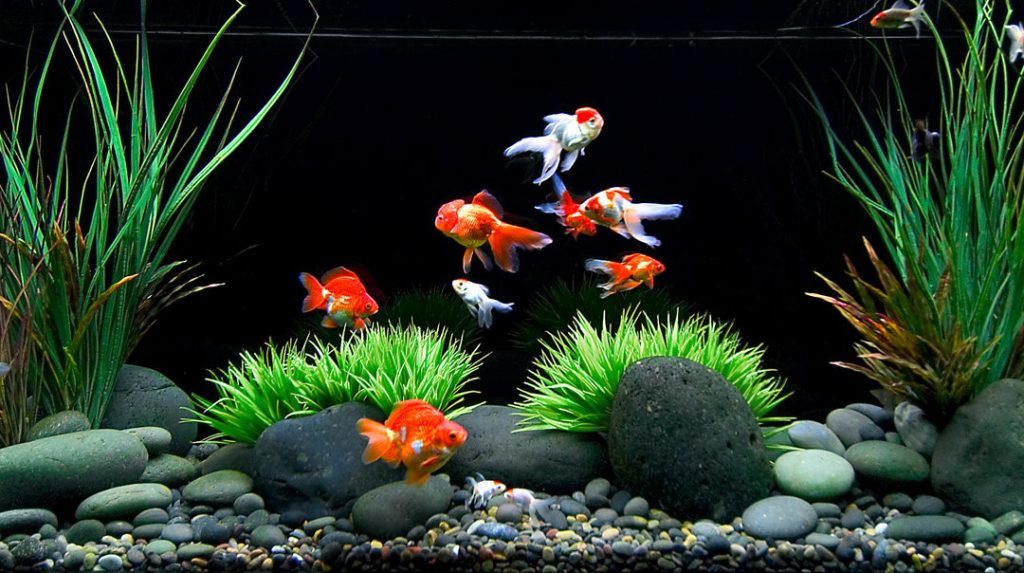
Goldfish, with their vibrant hues, graceful forms, and unique characters, have long been a favorite among aquarium lovers. Their captivating beauty and distinct personalities have made them a popular choice for many.
However, caring for goldfish involves more than just a tank and some food. They need just the right environment to flourish. It’s not just about providing a home and sustenance, but about creating a habitat where they can truly thrive.
With a bit of knowledge and care, you can create a nurturing home for your goldfish. This will help them live a joyful and healthy life.
Before Choosing Your Perfect Goldfish
Goldfish are a beloved choice for aquarium enthusiasts, but they are far from a one-size-fits-all pet. There is a wide variety of goldfish types, each with its own unique appearance, personality traits, and specific care requirements.
Goldfish are generally divided into two main categories: common and fancy.

Despite their name, goldfish display a diverse range of colors and body shapes, offering a spectrum far beyond the expected golden hue.
Common goldfish, often seen in ponds and fountains, are characterized by their streamlined bodies, a single tail fin, and a dorsal fin. Varieties like the comet, shubunkin, and the classic common goldfish fall into this category. These goldfish are recognized for their hardiness and agility, known for being fast swimmers and relatively easy to care for, making them ideal for beginners or outdoor settings.
On the other hand, fancy goldfish have undergone selective breeding to develop more distinctive traits. These include rounder body shapes, double tail fins, the absence of a dorsal fin, or even telescope eyes. Fancy goldfish, with their unique features, tend to be more delicate and slower in their movements. They are more prone to health issues, requiring a bit more care and attention, making them better suited for experienced enthusiasts and indoor aquarium environments.
Every goldfish variety has its unique appeal and distinct care needs, making the decision between standard and fancy types a significant one for goldfish enthusiasts.
Goldfish Deserve a Cozy and Comfortable Living Space

Goldfish deserve a cozy and comfortable living space like any other pet.
Before bringing a goldfish home, there are a few important considerations to keep in mind to ensure they thrive in their new environment.
Your Goldfish Needs Plenty of Room to Swim
One common misconception is that goldfish can live comfortably in small spaces. In reality, goldfish can grow up to 12 inches (30 cm) and produce a lot of waste, which can quickly contaminate their water.
To keep your goldfish healthy, a spacious tank with efficient filtration is crucial. A good rule of thumb is to provide at least 10 gallons (30 liters) of water for each goldfish.
A spacious environment supports their health and growth and helps maintain a cleaner and more stable aquatic ecosystem for your goldfish.
Goldfish Are Social but Choose Their Friends Wisely
Goldfish are social creatures who thrive best with companions of their own species.
However, it's not just a matter of grouping any goldfish together. Standard and fancy goldfish vary significantly in their needs and behaviors, and combining them might cause stress and competition. Sensitive types like bubble-eye or telescope-eye goldfish require thoughtful pairing to prevent harm.
It’s also important to note that goldfish generally don’t mix well with other aquarium fish due to differing habitat requirements and potential risks of harm. So, when creating a goldfish community, aim for similar sizes and temperaments to ensure harmony for your tank.
The True Cost of Owning Goldfish
While goldfish can be purchased for as little as $5 or as much as $500, the real investment goes beyond the initial purchase.
To ensure they live a happy and healthy life, you'll need a variety of equipment, such as:
- A spacious tank
- A high-quality filter system
- A heater if you live in a cooler climate
- An air pump for oxygenation
- A water test kit to monitor their environment
- Water conditioner to keep the water safe
Choosing the Right Tank Size
When it comes to the well-being of your fancy goldfish, the importance of ample space cannot be overstated.
Start with a tank that holds at least 20 gallons (or 60 liters) for the first goldfish. This ensures that your goldfish have plenty of room to swim comfortably, which is crucial for their health and well-being.
A larger tank also helps maintain a healthy water environment. With more water volume, you'll have better water quality, reduced stress for the fish, and ample space for them to explore and thrive.
This not only creates a happier home for your goldfish but also makes your tank a serene and beautiful focal point in your space.

An acrylic goldfish aquarium
When setting up your fancy goldfish tank, the first decision to make is the type of tank. There are two main options: glass and acrylic, each with its own benefits. Consider these factors to make the right choice:
- Glass Tanks: Known for their durability and clarity, glass tanks are a classic choice. They are scratch-resistant and offer a crystal-clear view of your aquatic world. However, they are heavier and can be more challenging to move.
- Acrylic Tanks: These tanks are lighter and more impact-resistant than glass. They provide more flexibility in shapes and sizes, which is great for custom setups. Acrylic tanks also insulate better, helping to maintain consistent water temperatures. The downside is that they are more prone to scratching.
Both types of tanks have their advantages, so your choice will depend on your personal preferences and practical considerations like placement and maintenance. Remember, the right tank is the foundation of a thriving goldfish habitat.
Ensuring Clean Water with the Right Filtration System
When it comes to keeping your fancy goldfish happy and healthy, having a reliable filtration system is absolutely essential. Filtration plays a crucial role in ensuring the well-being of your finned friends.
Goldfish are known for their hearty appetites, leading to significant waste in the water. Without proper filtration, this waste can cause ammonia spikes and poor water quality, risking your goldfish’s health and leading to stress, illness, or worse.
A good filtration system serves several vital purposes. It removes physical debris, leftover food, and waste, while also breaking down harmful chemicals like ammonia and nitrites, converting them into less harmful substances.

A filtration system not only removes waste, toxins, and debris but also oxygenates and circulates the water.
There are various types of filtration systems available for aquariums:
- Mechanical Filters: Remove particles and debris from the water, keeping it clear.
- Biological Filters: Promote the growth of beneficial bacteria that break down toxins.
- Chemical Filters: Use chemical media to eliminate impurities from the water.
- Combination Filters: Incorporate two or more types of filtration for comprehensive and efficient water cleaning.
Selecting the right filter for your goldfish tank depends on factors such as tank size, the number of fish, and your maintenance preferences. It's crucial to choose a filter that can handle the specific needs of your fancy goldfish, ensuring their aquatic home remains pristine and safe.

A well-decorated tank can make your goldfish feel more at home and also reflect your personal style.
Now that you've got the tank and filtration sorted, it’s time to decorate your fancy goldfish’s home. Decorations not only enhance the visual appeal of your aquarium but also create a stimulating and comfortable environment for your fish.
Here are some delightful additions to consider:
- Substrate: Choose fine gravel or sand to mimic their natural habitat and make cleaning easy. Avoid rough or sharp materials to prevent injuries.
- Greenery: Whether live or artificial, aquatic plants provide hideaways and enriching features for your goldfish. They also help with oxygenation and water quality. Ensure any live plants are compatible with goldfish and won’t be eaten.
- Hideaways: Include caves, driftwood, or PVC pipes to create hiding spots and territories. This reduces stress and encourages natural behaviors.
- Ornaments: Add personality with decorations like castles, shipwrecks, or underwater-themed items. These bring a playful and visually appealing touch to your aquarium.
- Safety First: Ensure all decorations are free from sharp edges or small parts that could harm your goldfish.
A well-decorated tank not only enhances the beauty of your goldfish's home but also contributes to their overall well-being. Get creative and design a captivating underwater world for your fancy goldfish to explore and enjoy.
Maintaining Optimal Water Conditions
Your fancy goldfish need water that is just right to stay healthy and happy. There are some important things you need to know and do to keep your water quality high. Let’s take a closer look at what they are:
Keeping the Temperature Just Right
Goldfish are cold-water enthusiasts, thriving in temperatures between 65°F to 75°F (18°C to 24°C). Therefore, providing a stable and suitable temperature range is crucial for their well-being.
Use a reliable aquarium thermometer to monitor fluctuations, and consider using a heater if your room temperature tends to drop significantly.
Balancing the pH Levels
The acidity or alkalinity of your tank water is measured by its pH level. Goldfish like water that is neither too acidic nor too alkaline, but just right - around 7.0 on the pH scale.
To keep your goldfish happy and healthy, you should check the pH of your water regularly with a test kit. If the pH is too high or too low, you can use pH buffers to adjust it, but be careful not to change it too quickly or too much. Sudden or drastic changes in pH can shock your goldfish and cause them stress or illness.
Managing Ammonia and Nitrite Levels
Your goldfish produce ammonia and nitrite as they poop and eat. These substances are very bad for your fish and can burn their gills, damage their organs, or even kill them. You want to keep these levels as close to zero as you can.
To do this, you need a cycled aquarium with good bacteria that can turn ammonia and nitrite into nitrate, which is much less harmful.
You also need to test your water regularly with a kit and change some of it every week or so to keep your water clean and safe.
Regular Water Changes
Your tank water will get dirty and unhealthy over time, so you need to change some of it regularly. This is one of the most important things you can do to keep your aquarium in good shape.
Aim to replace 10-25% of the water every 1-2 weeks, adjusting based on your tank size and fish population. This practice removes excess food, waste, and debris that can compromise water quality.
Before adding tap water to your tank, treat it with a water conditioner. Tap water typically contains chlorine and chloramine, which are harmful to fish but safe for humans. A water conditioner ensures your tap water is fish-friendly, creating a safe aquatic haven for your goldfish.
When it comes to lighting up your fancy goldfish tank, there's more to it than meets the eye to ensure the well-being of your aquatic companions.
First things first, you've got to decide on your source of illumination: natural sunlight, artificial lights, or maybe a bit of both.
- Natural Lighting: Some aquarists prefer to position their tanks where they can enjoy the gentle touch of natural sunlight. It adds an authentic touch and promotes the growth of live plants. However, there are some essential considerations to bear in mind. Direct sunlight can trigger algae invasions and temperature fluctuations so choose your tank's spot wisely to avoid these issues.
- Artificial Lighting: Aquarium-specific LED or fluorescent lights are the go-to choices for those seeking precise control over their tank's lighting. This is particularly important for fancy goldfish, as they have delicate swim bladders. Consistency is their best friend, and artificial lights can be set on a timer to provide a regular day-night cycle, benefiting both fish and live plants.

Lighting is more than just aesthetics – it's about creating the perfect ambiance for your fancy goldfish to thrive.
However, lighting is more than just aesthetics – it’s about creating the perfect ambiance for your fancy goldfish to thrive. Creating a lighting schedule is like setting the mood for your goldfish. Aim for 10-12 hours of light per day to mimic a natural day-night cycle. Remember, consistency is key, so use a timer to keep things on track. This routine helps keep your goldfish stress-free and encourages them to be their happy, healthy selves.
If your tank boasts vibrant live plants, you can extend the lighting duration slightly. Just be cautious not to overdo it, as too much light can lead to excessive algae growth. Keep a close eye on any green invaders and adjust the lighting schedule as needed.
Feeding and Nutrition for Goldfish
Understanding the Dietary Needs of Goldfish
Goldfish, especially the fancy varieties, have specific dietary requirements essential for their well-being. It's like knowing the favorite foods of your close friends - understanding what's on the menu for your fishy pals is the first step in keeping them happy and healthy.
These aquatic companions are omnivores, which means they enjoy a balanced and varied diet to stay in top shape and display their stunning colors. However, not all foods are created equal, and some are better suited to fancy goldfish than others.
To help you make the best food choices for your stylish aquatic friends, here is a table of handy types to consider:
|
Type of Goldfish Food |
Pros |
Cons |
|
Flakes |
|
|
|
Pellets |
|
|
|
Live Foods |
|
|
|
Freeze-Dried Foods |
|
|
|
Vegetables |
|
|
Incorporating a well-balanced combination of these food types ensures that your goldfish receive a diverse and nutritious diet, promoting their health and enhancing their radiant colors. Remember, variety is the spice of life, and it keeps your aquatic companions eagerly anticipating their next meal.

Goldfish tend to overfeed, which can lead to various health issues and negatively impact water quality in your tank.
Establishing a feeding schedule for your fancy goldfish is crucial for their overall health. It ensures they receive the right amount of food without the risk of overfeeding. Let's explore how to create an effective feeding routine.
Feeding Frequency
Goldfish thrive on a well-regulated feeding schedule. Here's a general guideline:
- Young goldfish (under six months old): Feed them 2-3 times daily in small portions.
- Adult goldfish (six months and older): Reduce feedings to once or twice daily.
Adjust the frequency based on your goldfish's activity level and appetite. It's essential to strike a balance – while they can be enthusiastic eaters, overfeeding can lead to obesity and health issues.
Portion Control
Goldfish have a knack for appearing hungry, even when they're not. Portion control is vital to prevent overfeeding. Offer an amount of food that your goldfish can consume in 2-3 minutes. If there's leftover food after this time, you're likely overfeeding.
Tailor the portion size to match the age, size, and activity level of your goldfish. Younger and more active fish require slightly more food, while older and less active ones need less.
Avoid Overfeeding Your Goldfish
Overfeeding is a common mistake that can have serious consequences for your goldfish and your tank's water quality. Here's why you should steer clear of this pitfall:
- Digestive Issues: Overfed goldfish can suffer from indigestion and constipation, which can lead to swim bladder problems.
- Water Pollution: Uneaten food decaying in the tank releases harmful ammonia and nitrites, compromising water quality.
- Obesity: Just like humans, goldfish can become obese if they consume too many calories. Obesity can lead to various health issues.
To avoid overfeeding, stick to the recommended feeding schedule and portion sizes. Remember, it's better to slightly underfeed than overfeed.
Keeping Your Goldfish Healthy
Taking care of your goldfish involves more than just providing a comfy home and good food. It's also about keeping them healthy and understanding common ailments they may encounter for early detection and prevention.
Recognizing Common Goldfish Ailments

If you suspect your goldfish is unwell, pay close attention to any changes in their scale color, fin shapes, and behavior.
Here are some illnesses that your goldfish may encounter::
- Swim Bladder Disease: This condition affects a goldfish’s ability to control its buoyancy and balance, causing them to float upside down, sink to the bottom, or swim erratically. Causes include overfeeding, constipation, infection, or genetic factors.
- Fin Rot: A bacterial infection that causes the edges of the fins to become frayed, discolored, and inflamed, potentially leading to tissue loss and bleeding. Poor water quality, stress, injury, or parasites can cause it.
- Ich (White Spot Disease): A parasitic infection characterized by small white spots on the skin, gills, and fins. It can cause scratching, rapid breathing, and lethargy. Causes include stress, temperature fluctuations, or the introduction of new fish.
- Anchor Worms and Fish Lice: External parasites that attach to the body, causing redness, swelling, ulcers, and secondary infections. They can be introduced by live foods, plants, or new fish.
- Hole-in-the-Head Disease: A bacterial infection causing eroding holes on the head and sometimes the body. Symptoms include weight loss, appetite loss, and lethargy. Poor nutrition, stress, or poor water quality can cause it.
- Dropsy: A condition causing the goldfish to swell up with protruding scales, abdominal pain, difficulty breathing, and kidney failure. Causes include bacterial, viral, or fungal infections, organ damage, or tumors.
Some of the symptoms that may indicate your goldfish is sick are:
- Loss of appetite or weight
- White spots
- Frayed fins
- Discolored gills
- Missing scales
- Erratic swimming
- Lethargy
- Swelling or protruding scales
- Floating upside down or sinking to the bottom
If you notice any of these symptoms, take action to diagnose and treat the problem immediately.
Preventing Diseases and Treatment
One of the most effective strategies for disease prevention is using a quarantine tank. Before introducing new fish into your main tank, quarantine them in a separate, smaller tank. This allows you to observe them for signs of illness and treat them if necessary without risking the health of your established fish. A quarantine tank acts as a health checkpoint for new fish.

Many goldfish diseases are contagious, so it's essential to isolate sick fish for treatment in a separate tank. Keep an eye out for changes in behavior, such as reduced activity, loss of appetite, or hiding. Early detection enables prompt intervention and better chances of recovery. Make it a routine to spend some quality time with your fish, observing their behavior and appearance. Your close attention can make all the difference in identifying issues before they become serious.
If you believe your fancy goldfish is unwell, seek guidance from a veterinarian or an experienced aquarist for a thorough diagnosis. Treatment may involve antibiotics, antifungals, or anti-parasitic medications, depending on the specific ailment. Follow the recommended treatment plan diligently to increase the chances of success.
By consistently implementing these disease prevention measures, you can establish a healthier and more secure environment for your fancy goldfish.
Conclusion
If you’re looking for a hobby that is fun, relaxing, and rewarding, you might want to consider keeping fancy goldfish. These are not your ordinary goldfish that you see in pet stores, these are stunning beauties that come in all kinds of colors, shapes, and sizes. They have amazing personalities and can even recognize their owners. They are like living art that you can admire and interact with every day.
But keeping fancy goldfish is not a walk in the park. These fish need a lot of care and attention to stay healthy and happy. They need a big tank with clean water, good filtration, and enough oxygen. They also need a varied diet of quality foods that suit their nutritional needs. And they need regular water changes and health checks to avoid getting sick.
If you’re ready to take on the challenge of keeping fancy goldfish, you’ll need a reliable source of live aquatic products. That’s where Tropicflow, a tropical fish store that offers live aquatic products with competitive prices and professional customer service, comes in!
Visit our website to browse our fancy goldfish collection and order your favorite fish!
With Tropicflow, you can experience the joy of keeping fancy goldfish and join a community of passionate aquarium enthusiasts.
No comments

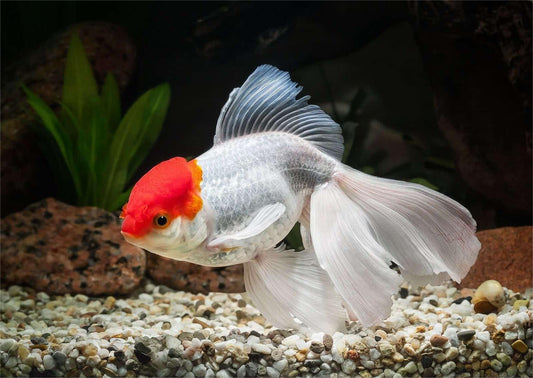
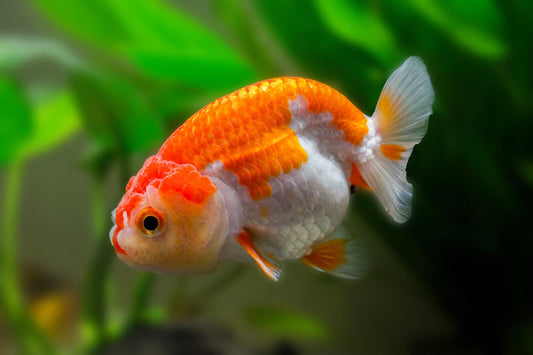
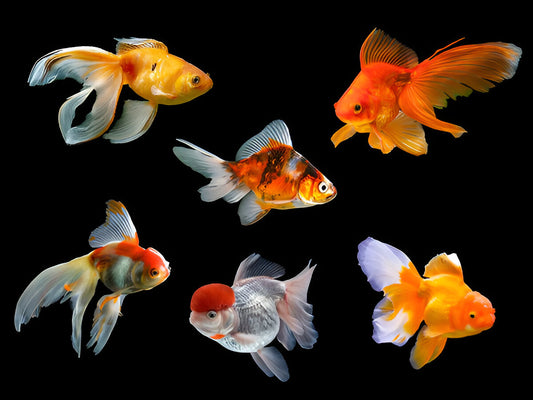
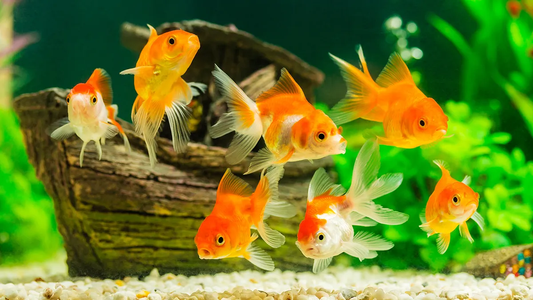


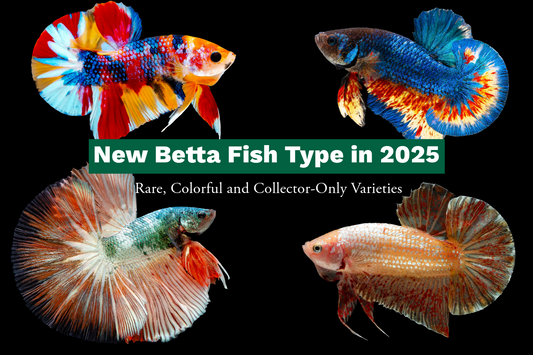

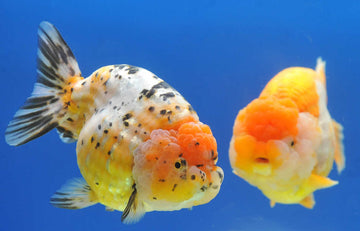
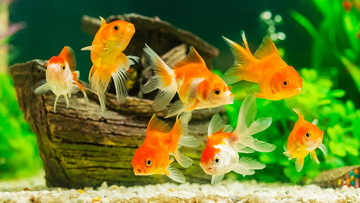
0 comments